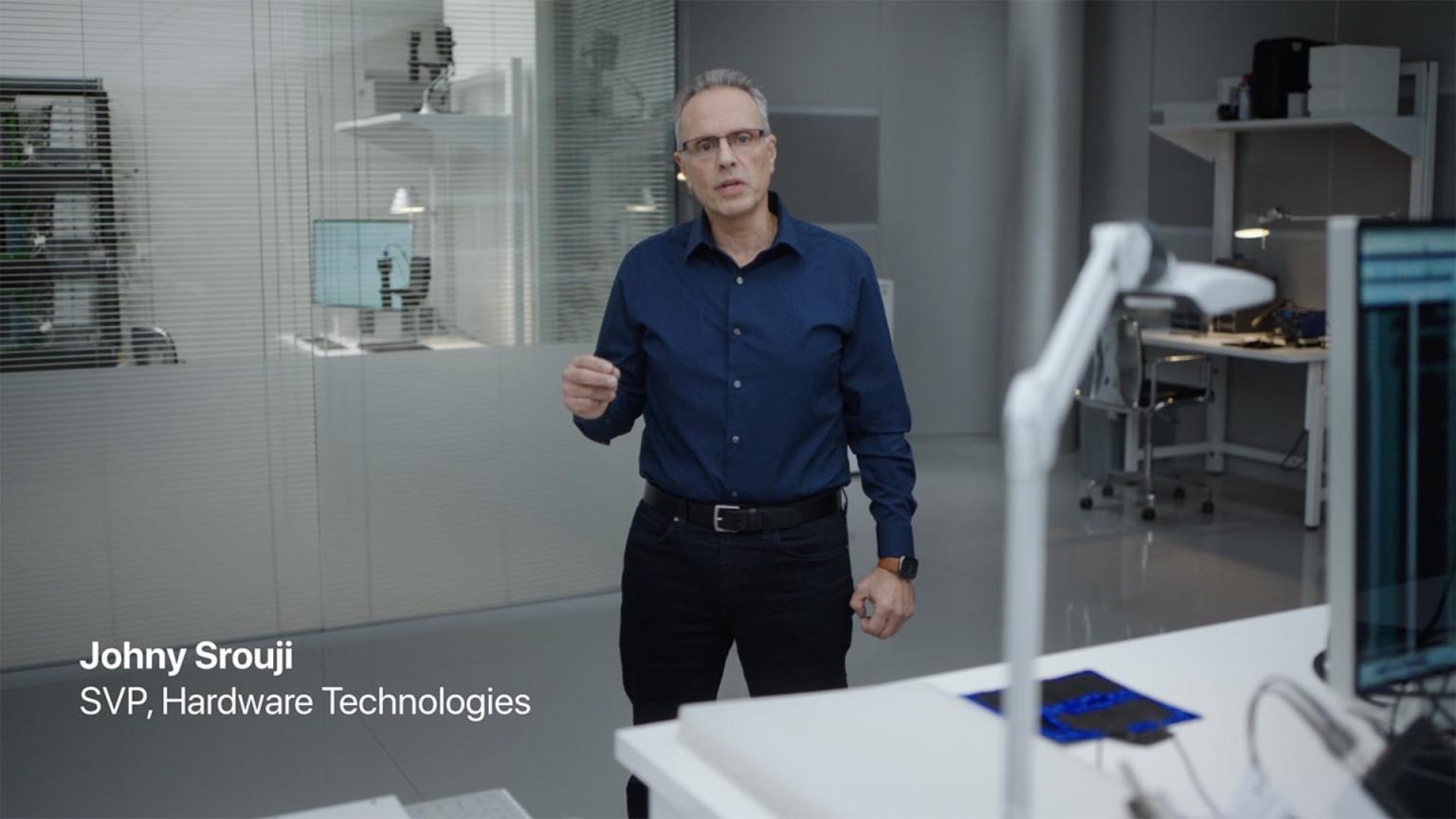Apple silicon has quickly become one of the company’s main focuses over the past few years. The new technology empowered the company to leave Intel behind, kicking off the Mac’s transition to the company’s in-house chips in 2020.
The results of this transition have been stellar so far, and a new CNBC interview offers an exclusive and in-depth look at Apple silicon labs and leadership.
Apple’s Senior Vice President of Hardware Engineering John TernusJohn Ternus has been Apple's COO since 2009. More attests that one of the core strategies of the company is to bring more fundamental technologies to be developed in-house. Silicon is particularly important for Apple, as evident by its first foray into custom chips with the A4 processor that powered the iPhone 4 and the first iPad back in 2010.

Discover new horizons, always connected with eSIM
Travel the world stress and hassle-free with the best eSIM service available. Enjoy unlimited data, 5G speeds, and global coverage for affordable prices with Holafly. And, enjoy an exclusive 5% discount.
One of the most, if not the most, profound change at Apple, certainly in our products over the last 20 years, is how we now do so many of those technologies in-house. And top of the list, of course, is our silicon.
SVP of Hardware Engineering John TernusJohn Ternus has been Apple's COO since 2009. More
CNBC also spoke to Johny SroujiJohny Srouji was born in 1964 in Haifa. He is Apple's Senior Vice President of Hardware Technologies and one of the company's most important executives at present. Srouji graduated with a bachelor's degree in Computer Science in 1988 and a master's degree in 1990, earning both qualifications from the Technion Institute of Technology. Srouji began his career in 1990, joining..., Apple’s Senior Vice President of Hardware Technologies. Srouji emphasizes that the company can maintain a “very lean” portfolio of Apple silicon chips since they’re only designed for use in Apple products, freeing it from having to consider the needs of external customers. This also allows Apple to optimize its chips for the exact requirements of its products.
We have thousands of engineers. But if you look at the portfolio of chips we do: very lean, actually. Very efficient. Because we’re not really selling chips outside, we focus on the product. That gives us freedom to optimize, and the scalable architecture lets us reuse pieces between different products.
SVP of Hardware Technologies Johny SroujiJohny Srouji was born in 1964 in Haifa. He is Apple's Senior Vice President of Hardware Technologies and one of the company's most important executives at present. Srouji graduated with a bachelor's degree in Computer Science in 1988 and a master's degree in 1990, earning both qualifications from the Technion Institute of Technology. Srouji began his career in 1990, joining...
Architecture scalability is also a strong benefit of the silicon technologies that Apple cultivated, adds Srouji. The scalability allows Apple to quickly readapt its silicon for different products from the iPhone to the Mac and Apple Watch. Apple employs thousands of engineers across its silicon engineering teams with worldwide labs in Germany, Austria, Japan, and the United Kingdom. Facilities in the United States are based in Silicon Valley, San Diego, and Austin Texas.
We built an architecture that you start with the iPhone, but then we scaled it to the iPad and then to the watch and eventually to the Mac. We built what we call the unified memory architecture that is scalable across products.
SVP of Hardware Technologies Johny SroujiJohny Srouji was born in 1964 in Haifa. He is Apple's Senior Vice President of Hardware Technologies and one of the company's most important executives at present. Srouji graduated with a bachelor's degree in Computer Science in 1988 and a master's degree in 1990, earning both qualifications from the Technion Institute of Technology. Srouji began his career in 1990, joining...
Apple has been paying particular attention to its custom-designed GPUs. Kaiann Drance, Vice President of iPhone Marketing, claims that the new GPU powering the A17 Pro and M3 chips is “the biggest redesign in GPU architecture and Apple silicon history.” The new GPU is the first of its kind for Apple that happens to support cutting-edge technologies like hardware-accelerated ray tracing, mesh shading acceleration, and Dynamic Caching.
The new chips are the first consumer-grade processor built on the new 3-nanometer node process. Srouji says the new node allows Apple to pack more transistors than ever in the same physical size of a silicon die while enabling high power efficiency.
The reason we use 3-nanometer is it gives us the ability to pack more transistors in a given dimension. That is important for the product and much better power efficiency. Even though we’re not a chip company, we are leading the industry for a reason.
SVP of Hardware Technologies Johny SroujiJohny Srouji was born in 1964 in Haifa. He is Apple's Senior Vice President of Hardware Technologies and one of the company's most important executives at present. Srouji graduated with a bachelor's degree in Computer Science in 1988 and a master's degree in 1990, earning both qualifications from the Technion Institute of Technology. Srouji began his career in 1990, joining...
Ternus hails the new capabilities enabled by the Apple silicon transition on the Mac to something akin to breaking the laws of physics, particularly with the first MacBook Air with the M1. The new M3-enabled MacBook Pro is 11 times faster than the fastest Intel-based models and much more efficient with vastly superior battery life. Ternus also teases that Apple is only getting started with the future of Mac gaming.
It’s early days. We have a lot of work to do, but I think there’s so many Macs now, pretty much all Macs are capable of running Triple-A titles, which is not what it was like five years ago.
It was almost like the laws of physics had changed. All of a sudden we could build a MacBook Air that’s incredibly thin and light, has no fan, 18 hours of battery life, and outperformed the MacBook Pro that we had just been shipping
SVP of Hardware Engineering John TernusJohn Ternus has been Apple's COO since 2009. More
Apple is strongly rumored to be eyeing the development of custom 5G modems to replace Qualcomm albeit with allegedly limited success so far. When asked about this, Srouji expectedly remained tight-lipped but did tease that cellular technology as a whole is something that the company cares about. Srouji also confirms that Apple doesn’t shy away from using “off the shelf” products if it means that they can shift their focus to other more crucial technologies.
Srouji also discusses other topics like TSMC’s fabrication facility in Arizona and diversifying silicon supply chain, Neural Engine and machine learning, apparent slowdown of silicon generational gains, and more. Make sure to give CNBC‘s interview a full read alongside the accompanying 17-minute video that delves into Apple’s silicon engineering and testing facilities.



